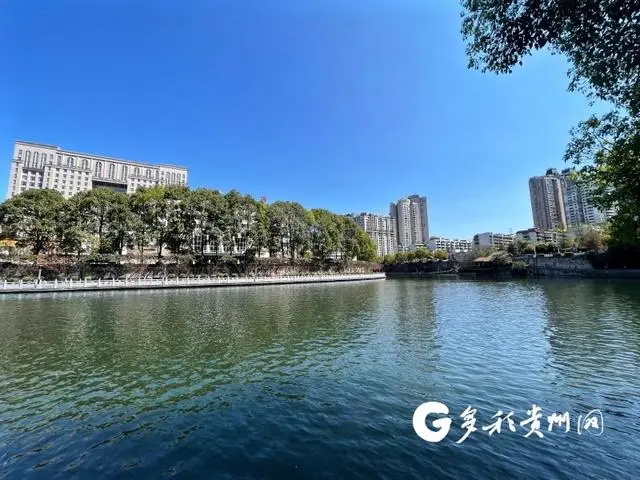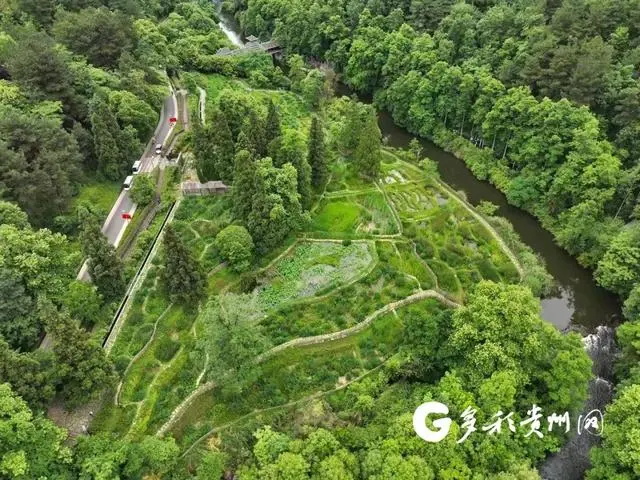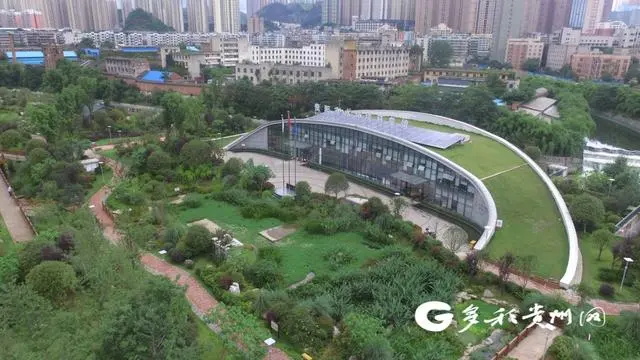"World Water Day · China Water Week" sewage achieves "re employment" and nourishes the ecological beauty of the city

The Nanming River is clear and smooth, with beautiful green scenery on its banks
The spring water is gentle and gentle, and the warm breeze is lingering.
Looking along the Nanming River, the lush shrubs and flowers complement the murmuring water on the river surface. The citizens in groups of three or two walk and take a nap here, which is very comfortable.
The spring in Lincheng, paired with the Nanming River passing through the city, adds a touch of agility and pleasant atmosphere.
Where do clear waters and waves come from?
Behind the clear and green banks of the Nanming River lies many invisible sunken recycled water plants, which undertake the task of treating urban domestic sewage. After going through a series of technological processes, the sewage becomes colorless, odorless, clear and transparent. Finally, it is replenished with qualified water to ensure the flow of Nanming River, keeping the mother river of Guiyang citizens green and flowing for a long time throughout the year.
And the treated sewage also has its own new name - recycled water.
In October 2022, Guiyang City was recognized by the Ministry of Water Resources and six other ministries as a pilot city for the allocation of renewable water resources in typical regions. Based on reality, Guiyang has taken the lead in piloting the scope, utilization direction, and utilization rate of recycled water, promoting the green transformation and development of the economy and society, and providing a demonstration for activating the city's "second water source".
March 22nd is the 32nd World Water Day, and March 22-28 is the 37th China Water Week. On this occasion, follow the reporter from Colorful Guizhou Network to explore the "recycling chain" of recycled water in this city.
Wastewater "re employment"
"Let's go take photos on the bridge!" "Look, the flowers here are blooming so brightly."... On March 23rd, the Aha Lake National Wetland Park in Guiyang City was lush with birds singing and fragrant flowers, and the scenery was beautiful and pleasant. Taking advantage of the good weather, many citizens come to exercise and play.
Walking in the park, trees and flowers such as wutong trees, camphor trees and canna trees are distributed in an orderly manner, and several water birds can be seen flying by the river. Everything looks comfortable and harmonious.
The park staff irrigated the green space as usual, but now they are using recycled water instead of tap water.
In recent years, in order to accelerate the construction of demonstration cities for the utilization and allocation of recycled water in the central urban area, and to complete 8 comprehensive utilization projects for recycled water, Guiyang City has incorporated unconventional water sources into the unified allocation of water resources. Among them, the Aha Lake National Wetland Park's unconventional water resource utilization (extension project of Qingshan Renewable Water Pilot Project) and water-saving demonstration park project construction have become one of the pilot projects of the project.

The picturesque Aha Lake National Wetland Park
According to Zhou Fubo, the project leader of Guizhou Zhuxin Water Environment Industry Co., Ltd.'s Renewable Water Utilization Project under China Water Environment Group, since May 2023, after the project is completed and put into operation, the park can directly take water from the Qingshan Renewable Water Plant in Guiyang City. After secondary pressurization, the recycled water will be transported to various branches of the park for use in toilet flushing, road cleaning, and green irrigation.
"Previously, the toilets and sprinkler irrigation in the park were all using tap water. Tap water was 4 yuan per ton, and recycled water was 1.5 yuan per ton. Since we replaced tap water irrigation with recycled water irrigation, water costs can be saved by 2.5 yuan per ton." Wang Jiameng, a staff member of Aha Lake National Wetland Park, said that in the long run, using recycled water is definitely more cost-effective than using tap water directly.
Regenerated water is the "second water source" of cities, and the reuse of urban sewage is one of the effective ways to improve the comprehensive utilization rate of water resources and reduce water pollution.
How to treat sewage into usable recycled water?
Zhou Fubo answered the reporter's doubts.
A drop of sewage that changes from turbid to clear requires at least four stages: pre-treatment, biological treatment, secondary sedimentation, and deep treatment. The final water quality can reach the surface level IV discharge standard and become usable recycled water.
The cycle has also given this city a waterfront scenery.
"After treatment, urban sewage has turned waste into treasure and become the best choice for environmental water use. Among them, high-quality recycled water mainly enters the Nanming River as supplementary landscape water, and some recycled water is used as environmental water for ground landscape parks to achieve energy regeneration and utilization. In addition, recycled water can also be used for irrigating vegetation along the line, landscaping, landscape engineering, and municipal sanitation, effectively replacing the consumption of precious fresh water, effectively achieving recycling and high-quality utilization, improving water resource utilization efficiency, and truly" quenching the thirst "for the city.".
Expand the "circular chain"
On March 24th, the reporter saw at the entrance and exit of Beimenqiao in Taiping Road block, Yunyan District, Guiyang City, that in the murmuring river water and fireworks, many tourists were playing while holding delicious food... It is hard to imagine that in the past, citizens used to cover their noses when walking through Guancheng River.
Guancheng River, also known as Taiping River (Jade Belt River), was the central axis of the old Guiyang City.
In the 1960s, with the expansion of cities and the increase in population, the space on both sides of the Guancheng River was constantly occupied, and domestic sewage began to be discharged into the river. The water quality gradually deteriorated and eventually evolved into a mixed rainwater and sewage discharge ditch.
Due to the aggravation of river pollution and the need for civil air defense projects, the Guancheng River has gradually been covered with steel and cement. Many additional areas later evolved into parking lots, shopping malls, and so on.
Now, the Guancheng River, which has disappeared for nearly 20 years, has regained its clear spring thanks to the completion and operation of two recycled water plants, Liuguangmen and Guiyi.

The water body of Guancheng River is clear and transparent
What is the mystery behind them?
It was learned during the interview that both recycled water plants are located in the center of Yunyan District, in the old urban area of Guiyang City. Due to high population density and scarce land, every inch of land is worth every penny. Therefore, the two water plants adopt a fully buried deep foundation pit design. The Liuguangmen Reclaimed Water Plant is built 32 meters underground, and the Guiyi Reclaimed Water Plant is built 31 meters underground. It was officially put into use in June 2020.
Taking the Liuguangmen Reclaimed Water Plant as an example, the reporter followed the stairs and arrived at a huge underground space. There were two floors in total, and the top was equipped with remote automatic control ventilation, lighting, fire protection and other equipment, without any sense of suffocation.
"Here, domestic sewage enters the pre-treatment area of the recycled water plant through the diversion tunnel from the Guancheng River interception ditch, and then flows through the biochemical tank area, MBR membrane tank area, and ultraviolet disinfection before being discharged into the Guancheng River. Finally, it is used for supplementary water supply in the Guancheng River channel," said Chen Genhua, assistant to the general manager of Guiyang Zhonghuaneng Water Service Co., Ltd.
"Previously, the water quality of Guancheng River was classified as inferior to Class V. After being treated by Guiyi and Liuguangmen Reclaimed Water Plant, the effluent water quality could reach the national first-class A standard, achieving a complete transformation from a black and odorous water body to a high-quality water body, truly transforming 'sewage' into 'beautiful water'." Chen Genhua added that the two water plants can supplement more than 120000 cubic meters of water to the river every day, laying an important foundation for the reopening and restoration of Guancheng River. ".
Moreover, the highlight of the two recycled water plants lies in their ability to achieve 20% recycled water, which can provide greenery, sports field lawns, and office and daily use for above ground sports complexes. Through the combination of "above ground+underground", municipal infrastructure, ecological environment, and urban architecture are integrated to achieve a "win-win" situation between ecological construction and urban intensive development. This not only meets the needs of urban sewage treatment, but also maximizes the intensive use of valuable land resources.
New Hope for the City
"The water quality of Guancheng River continues to improve, making people along the banks live more naturally, freely, and comfortably." Tian Renbi, a resident near Taiping Road, said that whenever the weather is sunny, she will take a walk or run along the riverbank to exercise.
The underground silently treats sewage, while the above ground is a landscape park or commercial complex that integrates leisure and entertainment, providing citizens with a chance to enjoy and rest. This is a true portrayal of Guiyang's promotion of the construction of a sunken recycled water plant.
Through visits, the reporter found that although the infrastructure cost of the sunken recycled water plant is higher than that of the ground, it saves the cost of land acquisition, pipeline construction, and recycled water diversion. Meanwhile, as a scarce resource, the commercial value of urban central land has also been maximized.
Transforming "sewage" into "live water", promoting the use of recycled water, and efficient operation of recycled water plants are key links in this "circular chain".

Ground Park Above Qingshan Reclaimed Water Plant
In recent years, the construction of distributed sinking sewage treatment plants in Guiyang City has not only solved the problem of urban water resource shortage, but also greatly reduced the problems of underground long-distance transportation leakage and environmental risks of sewage pipelines. As of now, there are a total of 49 recycled water plants in Guiyang City, including 19 underground recycled water plants.
The regeneration and utilization of water is an effective way to improve the water environment. In response to this, Guiyang City continues to deepen the promotion of water-saving technologies for enterprises and general units. For enterprises with large water consumption, it continuously explores the potential for water-saving, introduces and adopts advanced water-saving new processes, equipment, and materials. At the same time, we will urge enterprises with relatively backward water-saving levels to carry out water-saving technological transformation and innovation through policy support, financial support, service guidance, and other aspects, continuously improving water efficiency and efficiency.
According to the plan, Guiyang will further increase the use of urban renewable water resources this year. At present, 6 pilot projects for the utilization and configuration of recycled water have been completed, and an additional 14 pilot projects will be completed in the next two years.
"There is no garbage in the world, only the misplaced 'treasure', especially recycled water, which is a resource that needs to be regained with great effort and cost, and cannot be wasted bit by bit. The relevant person in charge of the Water Supply and Renewable Water Management Office of Guiyang Water Management Bureau stated that they will deeply develop the city's' second water source ', improve the facilities for using recycled water, and focus on actively planning renewable water projects such as water source heat pumps, urban complex utilization, bus washing, and industrial utilization around the use of recycled water outside the river, so as to achieve efficient utilization of more and more water resources and inject fresh water into the green development of Guiyang.".
Journalist's note:
Sewage also has great value! The "second water source" of cities that cannot be underestimated
Water is the mother of all things, the source of life, and the foundation of production and ecology.
How can turbid and even harmful wastewater be transformed into recyclable and economically beneficial recycled water?
——The sunken recycled water plant provides the answer.
Although the land area has been reduced, the sewage purification and treatment capacity has not been compromised. The entire factory area is bright and transparent, with neatly distributed equipment and no odor. After a series of treatment processes, it has been transformed into a standard water source.
Through daily visits, the reporter found that in recent years, Guiyang City has actively explored the construction of sinking type recycled water plants, improved the capacity of sewage treatment and recycling, solved a series of problems such as water ecological governance and water environmental protection. This not only provides strong support for ecological replenishment of rivers and lakes and the treatment of black and odorous water bodies, but also makes the reuse of recycled water have greater economic value.
Regenerated water, also known as "reclaimed water", refers to water that, after appropriate treatment of wastewater or rainwater, reaches a certain water quality index and can be used for beneficial purposes. It has the characteristics of "multiple uses of one water and reuse".
From an economic perspective, the cost of recycled water is the lowest; From an environmental perspective, wastewater recycling and utilization can help improve the ecological environment and achieve a virtuous cycle of water ecology.
Nowadays, recycled water is also commonly used in urban landscape and wetland reuse, urban water source heat pump heating, production and self use in sewage treatment plants, and other urban miscellaneous uses such as landscaping.
I believe that with the increasing demand for water in cities, there will be more opportunities for the reuse of recycled water, and this "circular chain" will generate greater economic, ecological, and social benefits.
In the future, Guiyang will also further innovate the use of recycled water, focusing on the reuse of recycled water, promoting the construction of a water-saving society, and laying a solid foundation for urban sustainable development of water resources.
Reporter from our website: Yang Jing
First instance: Ding Lian and Guo Qiuhan
Second instance: Yuan Xiaojuan
Third instance: Wang Lihuan


